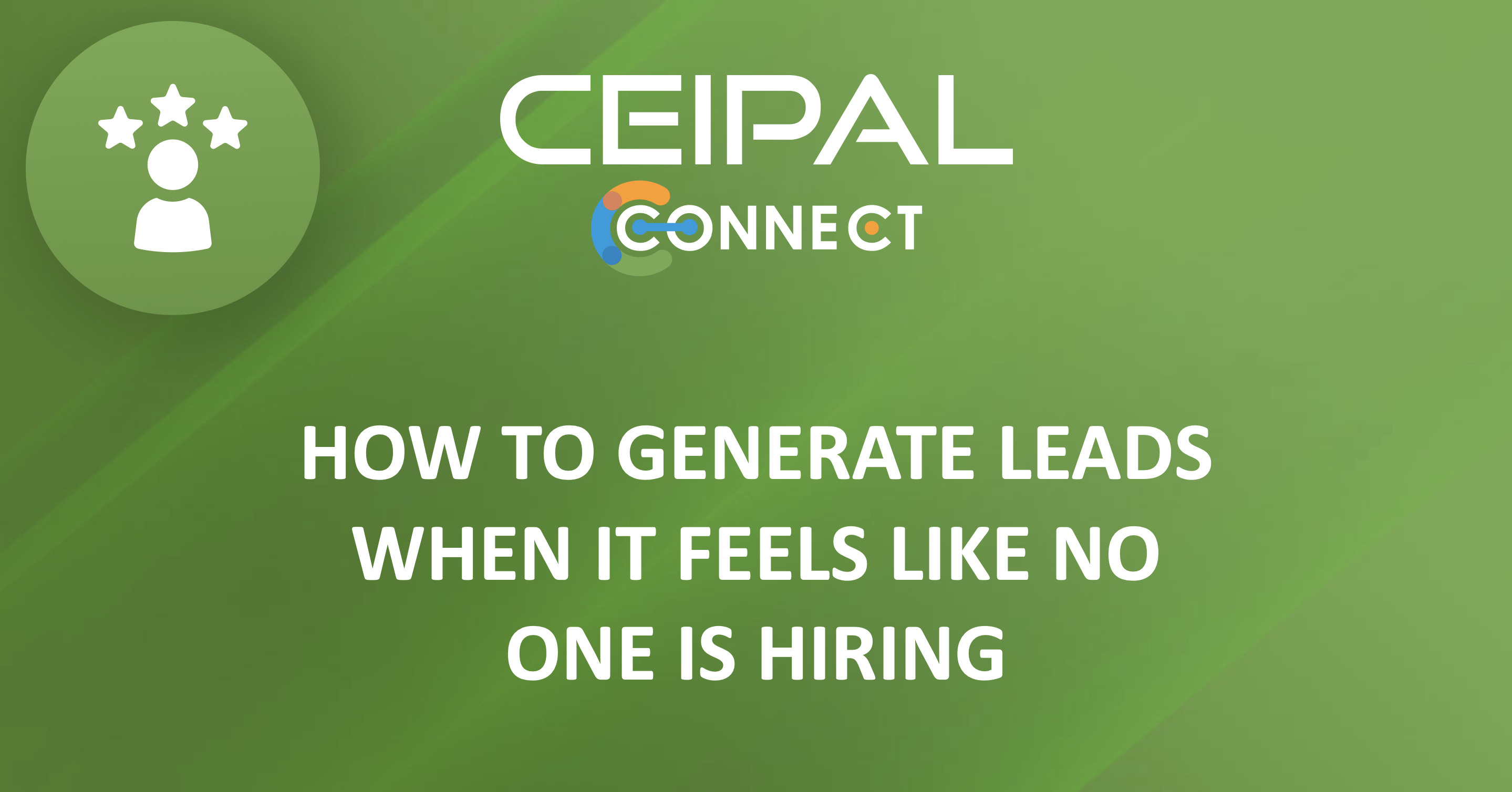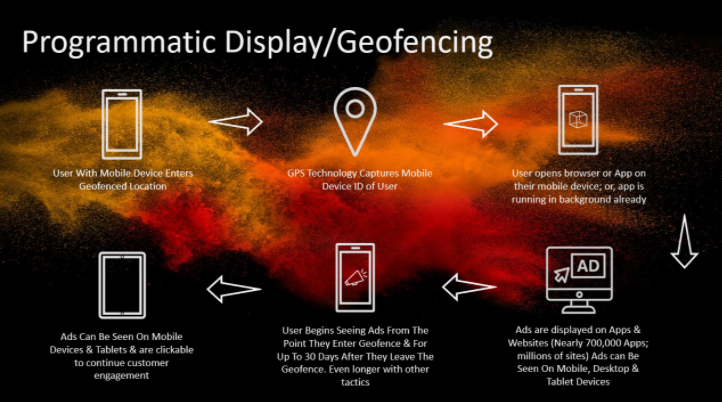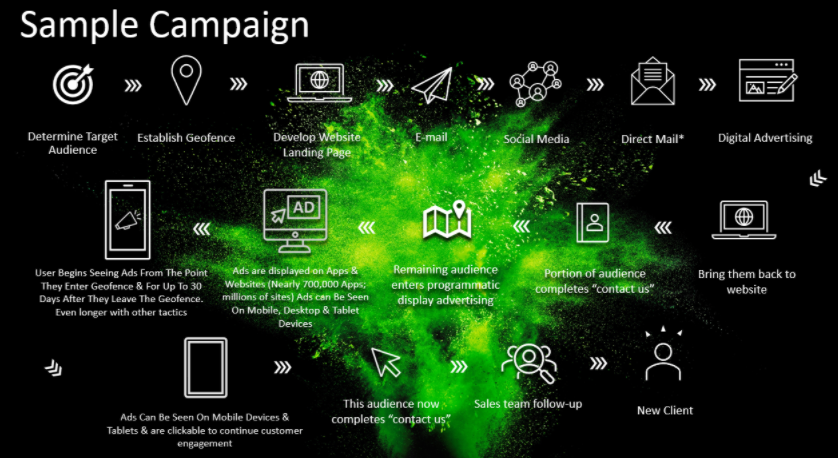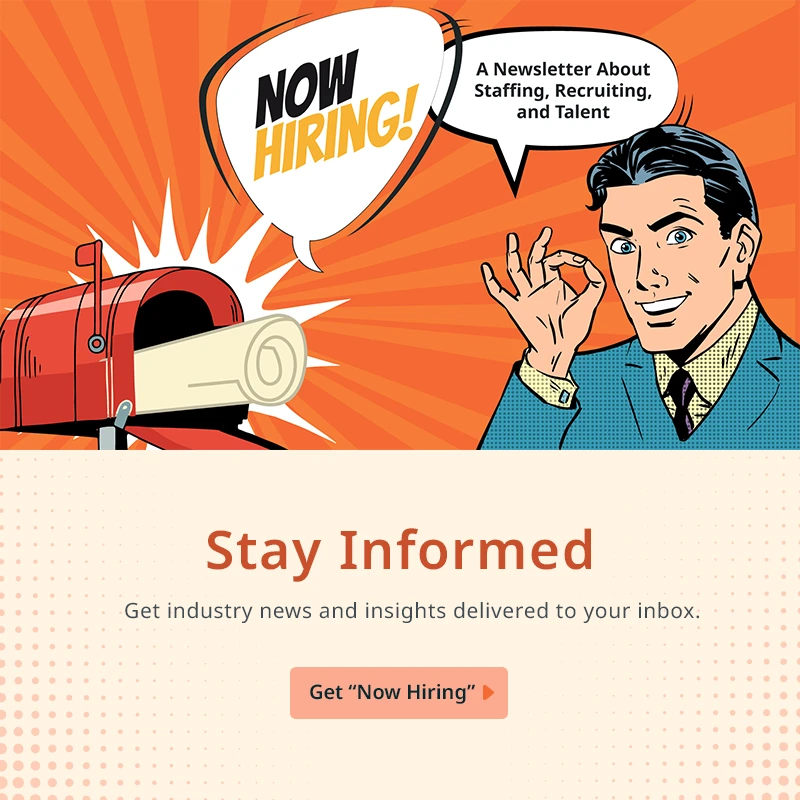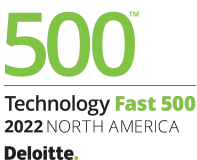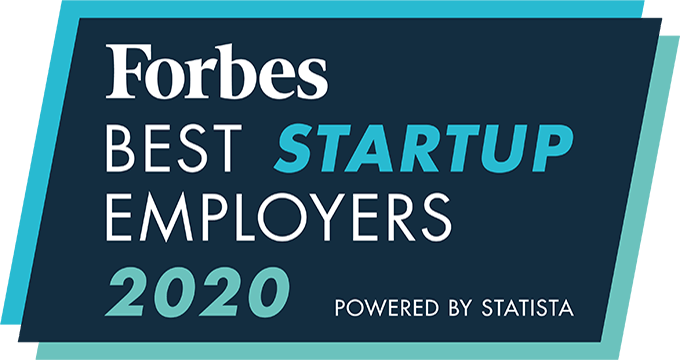Post COVID19, marketing will look very different. It’s important that staffing firms are prepared for the new opportunities—and challenges—they will face when trying to acquire new clients in 2021.
Watch the Replay
Presenter: Larry Hemley (President & Founder, S.J.Hemley Marketing)
Why Use a Lead Generation Campaign?
On a good day, the average salesperson reaches about 50-70 prospects. Of those 50-70, an excellent salesperson will connect with maybe 2-3. No more. With the sudden shift to work-from-home, these numbers may be even lower. And if your salespeople aren’t reaching prospects, how can you expect a steady stream of new leads?
The answer is lead generation campaigns. By leveraging marketing campaigns you can reach an unlimited number of prospects and drive them to your website whenever you want. These campaigns give you the ability to generate leads, even when it feels like no one is hiring. Here are a few tricks to get started.
Identifying Your Target Leads
The first step to launching a successful lead generation campaign is defining your target leads. Or rather, strategically defining your target leads. It’s not enough to say that “companies who need to hire new nurses” are your target audience. To quickly generate leads, you need to be specific.
Here are a few questions to ask yourself to start narrowing your audience:
1. Are you expanding within your existing customer base? Perhaps you work with a handful of hiring managers from enterprise clients. They’re part of a specific division that regularly needs manufacturers or skilled laborers. The chances are that there’s another division in their company that’s looking for the same skilled workers. <>
That person is your best bet at a new lead. First, you can ask for a referral from your current client (remember: 92% of customers trust referrals from people they know). Then, you can demonstrate that you know the ins and outs of that company’s hiring process. After all, you’ve made placements for them before.
2. Are you trying to reactivate past clients? Past clients are another huge pool of potential leads that staffing firms regularly overlook. Within your database, there are likely hundreds of old client contacts that no one touches. Those contacts are a gold mine of new leads.
Some staffing firms are scared to reconnect with past clients. Perhaps the business relationship ended on bad terms; perhaps your team messed up. But the reality is re-engaging past clients works. Apologizing for a past mistake, or simply saying that you’re not their old representative, can be enough to re-establish a relationship. S.J.Hemley Marketing finds that on average 1 in 10 past clients reinvest in the staffing firm’s services from these efforts.
Lead Generation Concepts
Those are the high-level considerations to help you determine your target audience. Now the only question is how do you actually start generating the leads?
The first step is to develop marketing collateral that brings clients to you. This kind of thought-leadership-oriented content development makes it possible to drive clients to your site and establish a relationship with them from the onset.
Some common types of marketing collateral include:
- Case Studies
- White Papers
- Virtual Events
- Blog Posts
- On-Site Trade Shows (when appropriate)
But to make this collateral truly effective, you need to tailor it to your client. A white paper on the state of hiring in healthcare will not appeal to your manufacturing clients, plain and simple. That’s why it’s important to identify your target leads before developing any collateral.
Programmatic Display & Geofencing
So now you have the content and you have the audience. The only step remaining is to connect the two by getting your content in front of your audience.
There are a myriad of ways to approach this problem. An active social media presence, email campaigns, and digital advertising are all critical avenues to connect with leads today. However, there are two particularly innovative approaches that staffing firms would do well to leverage.
1. Programmatic Displays. Programmatic display is the process of automated bidding on displaying advertising in real-time. If your bid is successful, your ad is shown to a specific customer type in a specific context.
For example, if a potential client comes to your site, visits a few pages, and then leaves without giving their information, that could be viewed as a missed opportunity. With programmatic display, however, your ad can appear on the next site that customer visits (like Facebook or Twitter), re-engaging that lead and potentially driving them back to your site.
2. Geofencing. Geofencing is similar to programmatic display, but it operates on a purely mobile and localized level. Geofencing puts up a virtual boundary around a location, in which certain mobile devices will see advertisements based on customer type and the bidding process. Geofencing helps attract clients at a local level, pinpointing your search even further.
Remember: only 2-3% of visitors to your website will give their contact information. By using these innovative forms of marketing, you’re empowering your firm to reach the other 97% and broadening your pool of potential customers.
Getting Started
An ideal lead generation campaign will include all of the above elements. From a segmented target audience, to strategic marketing collateral that addresses their interest, to innovative forms of engagement and follow-up, these marketing campaigns will yield results—even when it seems like no one is hiring.
An example campaign, provided by S.J.Hemley Marketing, is below.
About S.J.Hemley Marketing
S.J.Hemley Marketing helps companies build business, marketing, and sales strategies that are able to be communicated and executed against, with clear goals for all to analyze. S.J.Hemley Marketing listens to clients, in order to understand their particular needs, sharing advice and knowledge in order to drive their success. The company has over 20 years of experience building successful sales and marketing results.
